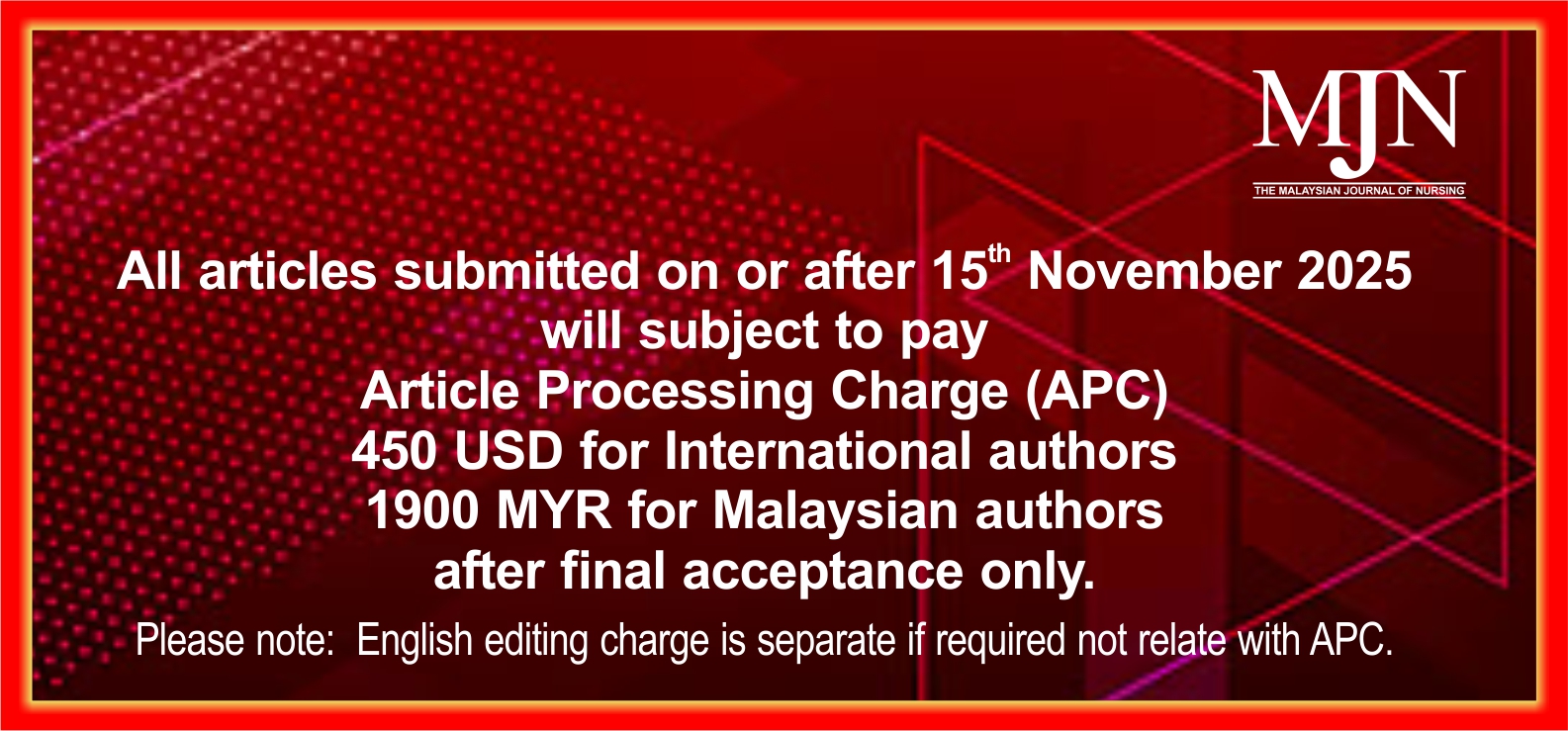Exploring Social Stigma and Awareness Towards Tuberculosis in a Municipality in Southern Philippines: A Mixed-Methods Study
DOI:
https://doi.org/10.31674/mjn.2023.v14i03.011Abstract
Background: Social stigma and awareness are frequently associated with the low rate of clinical diagnosis, case detection, and successful treatment of patients with Tuberculosis (TB). In the Philippines, however, there have been few studies on TB stigma and awareness.
Objective: The purpose of this study is to look into the level of social stigma and awareness about tuberculosis among patients, their relatives, and the community in a municipality in the southern Philippines.
Methods: An institution-based survey was conducted among 244 participants from various Regional Health Units (RHU) to assess social stigma and awareness of the deadly disease. Participants were divided into three groups: patients diagnosed with tuberculosis (TB), family members of the patients, and community members. The researcher used an exploratory sequential mixed method design to get a deep understanding of the statistical relationships between the variables and their context, collecting quantitative data first and then qualitative data.
Results: The findings revealed that the patient and the patient's relatives were more aware of the causes, clinical presentation, treatment, and mode of treatment of tuberculosis than members of the community, with a general mean of 1.60. This is attributed to the family's role as the primary caregiver, as well as a lack of general information and advertising about TB in the community. On the other hand, all three groups experienced high levels of social stigma, with a general mean of 1.90. Fear of transmission and discrimination were identified as the primary reasons. There is no significant relationship found between respondents' level of awareness and social stigma, which can be interpreted to mean that the stigma persists regardless of awareness.
Conclusion: The study reveals that general awareness of TB among community members stems from rumour and gossip rather than legitimate sources. As a result, the patient's and family members' social stigma remains high, which can contribute to unsuccessful case detection and treatment. It is thus recommended that policymakers strengthen programmes aimed at identifying and addressing the problems that lead to stigma.
Keywords:
Tuberculosis, Social Stigma, Awareness, Rural Health CenterDownloads
References
Abebe, G., Deribew, A., Apers, L., Woldemichael, K., Shiffa, J., Tesfaye, M., Abdissa, A., Deribie, F., Jira, C., Bezabih, M., Aseffa, A., Duchateau, L., & Colebunders, R. (2010). Knowledge, health seeking behavior and perceived stigma towards tuberculosis among tuberculosis suspects in a rural community in southwest Ethiopia. PloS One, 5(10). https://doi.org/10.1371/journal.pone.0013339
Chan-Yeung, M., Yeh, A. G. O., Tam, C. M., Kam, K. M., Leung, C. C., Yew, W. W., & Lam, C. W. (2005). Socio-demographic and geographic indicators and distribution of tuberculosis in Hong Kong: a spatial analysis. The International Journal of Tuberculosis and Lung Disease, 9(12), 1320-1326.
Courtwright, A., & Turner, A. N. (2010). Tuberculosis and stigmatization: pathways and interventions. Public Health Reports, 125(4_suppl), 34–42. https://doi.org/10.1177/00333549101250S407
Creswell, J. W., & Clark, V. L. P. (2017). Designing and Conducting Mixed Methods Research. Saga publications. Department of Health (2020). National tuberculosis control program manual of procedures. https://doh.gov.ph/sites/default/files/publications/NTP_MOP_6th Edition.pdf
Gupta, K. B., Gupta, R., Atreja, A., Verma, M., & Vishvkarma, S. (2009). Tuberculosis and nutrition. Lung India: Official Organ of Indian Chest Society, 26(1), 9–16.https://doi.org/10.4103/0970-2113.45198
Kipp, A.M., Pungrassami, P., Nilmanat, K., Sengupta, S., Poole, C., Strauss, R. P., ... & Van Rie, A. (2011). Socio-demographic and AIDS-related factors associated with tuberculosis stigma in southern Thailand: a quantitative, cross-sectional study of stigma among patients with TB and healthy community members. BMC Public Health,11(1), 1-9. 11 675. https://doi.org/10.1186/1471-2458-11-675.
Kristinawati, B., Muryadewi, A., & Irianti, A.D. (2019). The role of family as a caregiver in caring for family members that are suffering from Pulmonary Tuberculosis. Jurnal Ners,14(3) 362-366. https://doi.org/10.20473/jn.v14i3.17214
Lawn S. D. (2000). Tuberculosis in Ghana: social stigma and compliance with treatment. The International Journal of Tuberculosis and Lung Disease: The Official Journal of the International Union against Tuberculosis and Lung Disease, 4(12), 1190–1191.
Legesse, M., Ameni, G., Mamo, G., Medhin, G., Shawel, D., Bjune, G., & Abebe, F. (2010). Knowledge and perception of pulmonary tuberculosis in pastoral communities in the middle and Lower Awash Valley of Afar region, Ethiopia. BMC Public Health, 10 ,187. https://doi.org/10.1186/1471-2458-10-187
Mbuthia, G. W., Olungah, C. O., & Ondicho, T. G. (2018). Knowledge and perceptions of tuberculosis among patients in a pastoralist community in Kenya: a qualitative study. The Pan African Medical Journal, 30, 287. https://doi.org/10.11604/pamj.2018.30.287.14836
Moscibrodzki, P., Enane, L. A., Hoddinott, G., Brooks, M. B., Byron, V., Furin, J., Seddon, J. A., Meyersohn, L., & Chiang, S. S. (2021). The Impact of Tuberculosis on the Well-Being of Adolescents and Young Adults. Pathogens (Basel, Switzerland), 10(12), 1591. https://doi.org/10.3390/pathogens10121591
Mushtaq, M. U., Shahid, U., Abdullah, H. M., Saeed, A., Omer, F., Shad, M. A., Siddiqui, A. M., & Akram, J. (2011). Urban-rural inequities in knowledge, attitudes and practices regarding tuberculosis in two districts of Pakistan's Punjab province. International Journal for Equity in Health, 10 (8). https://doi.org/10.1186/1475-9276-10-8
Nidoi, J., Muttamba, W., Walusimbi, S., Imoko, J. F., Lochoro, P., Ictho, J., Mugenyi, L., Sekibira, R., Turyahabwe, S., Byaruhanga, R., Putoto, G., Villa, S., Raviglione, M. C., & Kirenga, B.
(2021). Impact of socio-economic factors on Tuberculosis treatment outcomes in north-eastern Uganda: a mixed methods study. BMC Public Health. 21(1), 2167.https://doi.org/10.1186/s12889-021-12056-1.
Peabody, J. W., Shimkhada, R., Tan, jr. C., & Luck, J. (2005). The burden of disease, economic costs, and clinical consequences of tuberculosis in the Philippines. Health Policy and Planning, (6): 347–353. https://doi.org/10.1093/heapol/czi041
Peterson, J. T. (1993). Generalized Extended Family Exchange: A Case from the Philippines. Journal of Marriage and Family, 55(3), 570–584. https://doi.org/10.2307/353339
Phillips, R., Benoit, C., Hallgrimsdottir, H., & Vallance, K. (2012). Courtesy stigma: a hidden health concern among front-line service providers to sex workers. Sociology of Health & Illness, 34(5), 681–696. https://doi.org/10.1111/j.1467-9566.2011.01410.x
Sisay, S., Mengistu, B., Erku, W., & Woldeyohannes, D. (2014). Directly Observed Treatment Short-course (DOTS) for tuberculosis control program in Gambella Regional State, Ethiopia: ten years experience. BMC Research Notes, 7, 44. https://doi.org/10.1186/1756-0500-7-44
Sukumani, J.T., Lebese, R.T., Khoza, L.B., & Risenga, P.R., (2012). Experiences of family members caring for tuberculosis patients at home at Vhembe district of the Limpopo Province’. Curationis, 35(1), 1-8. http://dx.doi.org/10.4102/curationis.v35i1.54
Tolossa, D., Medhin, G., & Legesse, M. (2014). Community knowledge, attitude, and practices towards tuberculosis in Shinile town, Somali regional state, eastern Ethiopia: a cross-sectional study. BMC Public Health, 14, 804. https://doi.org/10.1186/1471-2458-14-804
Yousif, T. K., Khayat, M. I., & Salman, H. D. (2009). Survey of knowledge, attitudes and practices: enhanced response to TB ACSM, Iraq. Middle East Journal of Family Medicine, 7(1), 23-38.
World Health Organization. (2013). Global tuberculosis report. World Health Organization.
Zhang, T., Liu, X., Bromley, H., & Tang, S. (2007). Perceptions of tuberculosis and health
seeking behaviour in rural Inner Mongolia, China. Health policy (Amsterdam, Netherlands), (2-3), 155–165. https://doi.org/10.1016/j.healthpol.2005.12.009
Published
How to Cite
Issue
Section
License
Copyright (c) 2022 The Malaysian Journal of Nursing (MJN)

This work is licensed under a Creative Commons Attribution-NonCommercial-NoDerivatives 4.0 International License.



































